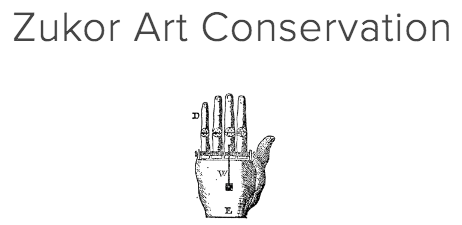By Karen Zukor, Zukor Art Conservation, Oakland California
Diego Conde’s Carta de La Ciudad de Mexico, 1793, after conservation. Photo courtesy of 42-line Digital Publishing.
Large wall maps have been numerous in our studio the past few years, each one presenting certain challenges. They tend to be of a significant size, requiring multiple people to move them and they usually have been poorly stored and handled. Their size alone almost guarantees that they have been rolled up and wrapped insufficiently. Once opened for viewing, minor problems such as edge tears or lifting areas of paper tend to have been addressed with tape or adhesives that contribute to further damage. Most maps of a certain dimension are reinforced with a cloth backing that, at least initially, allows them to be rolled and unrolled repeatedly - the textile provides support for the less flexible paper. But as paper ages, it often becomes brittle and more subject to breakage/cracking. The fabric can continue to be rolled but the paper map will suffer each time it is viewed.
Wall maps are also often coated with a varnish layer to ‘protect’ the surface; these coatings can bring their own damaging, disfiguring properties. Varnishes can darken over time and become difficult for future removal. If the coating is, for example, a natural resin and therefore dissolvable in organic solvents, those solvents may affect the printing inks and colors beneath. If synthetic, they may be completely insoluble and not removable at all.
To assess the extent of damage and possible intervention, it is important to know whether the map is valued because of the information it carries, its aesthetic qualities or its rarity. The other factor to consider is the eventual disposition of the map once it is repaired; will it be framed, rehung on dowels and displayed in a private or public venue, rolled up for storage, or digitized and discarded?
Conde’s map was particular in its qualities because of its age and extensive hand-coloring, and the accurate depiction of Mexico City and its environs in the late 18th C. It is baroque in embellishment, with a decorative border and vignettes from city life that illuminate the lower edge. One-third of the entire map consists of a chart or legend of everything depicted in the city; roads, churches, parks, public buildings, cemeteries, etc., all rendered in a small fine Italic typeface. Even in the fields and outer farms, each tiny tree is rendered with a shadow. Because it carried so much information and detail, this map was obviously meant to be studied and referred to. But it had been stored rolled up for many years and the result was a great deal of creasing, splitting and loss in the paper support. The cloth backing was dark and brittle and needed to be removed before the problems in the paper could be addressed. That backing had been applied with a thick adhesive layer that was water soluble – but so was the hand-coloring on the map itself. After a careful slow peeling, the cloth support was removed, exposing the thick discolored adhesive on the verso. Moisture would have helped to remove that adhesive layer but it would also have jeopardized the colors on the front. The decision was made to manually remove the old adhesive with flat microspatulas and scalpels – a very laborious process but a safer one.
Once the verso of the map was exposed, it was humidified by spraying with filtered water, pH 7.5, and the excess moisture removed with blotters. This ‘wet cleaning’ was repeated multiple times, to reduce the overall discoloration and aid in relaxing areas that were creased and crunched. Areas of extreme damage were realigned and held in place with mends of Japanese tengujo tissue and starch paste, before the entire map was backed with two layers of kozo; the first, a very thin toned tissue and the second, a medium weight machine made paper, both applied with thin starch paste. The map was then initially dried under wool felts with a polyester interleaving (Hollytex) and eventually stretched dried onto the table top. This method allowed the map to be gently pulled flat and held in place while the extensive paper losses were filled with toned paper to blend in. So much of the border design was missing that we had it digitized and printed out on tan laid paper (handmade J. Barcham Green). Strips of the design were shaped to fit into place, pasted down and colored to match the adjacent border. Minimal compensation was done with watercolors, to accommodate the variation in tone and was applied only to the contemporary fills.
The map was then framed archivally, with a Baroque black and gold wood moulding that complimented the complexity of the design. TruVue Museum Optium glazing was employed to preserve the rich coloring of the original but also to protect the fragile paper support from further darkening and embrittlement. Given the size of the map, Optium was chosen as a lightweight, clear, and shatter-resistant protective layer that was ideal for both storage and exhibition.
Published by TruVu Inc.
https://tru-vue.com/2018/10/the-conservation-of-diego-condes-carta-de-la-ciudad-de-mexico-1793/
Diego Conde’s Carta de La Ciudad de Mexico, 1793, after conservation. Photo courtesy of 42-line Digital Publishing.




